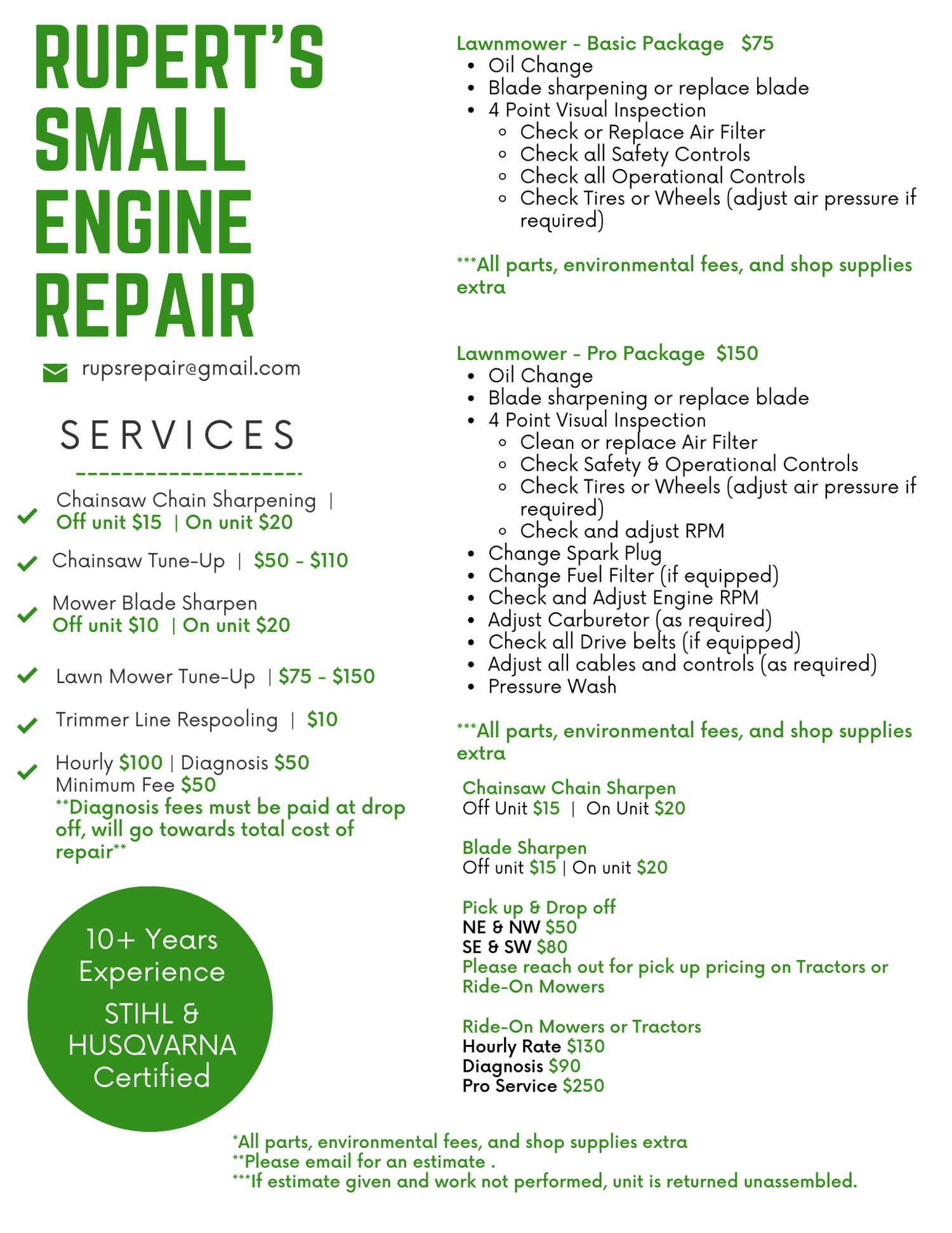Parts for Outdoor Power Equipment, Lawn and Garden Equipment and Small Engines
Rupert's Small Engine

Repair and Maintain your Equipment
DR Mower Parts & Rupert's Repair
We've teamed up with Rupert's Repair to bring you the best service and repair performed by a qualified technician. With easy drop-off in Calgary, fast turn-around and access to our extensive parts inventory, Rupert's Repair will keep your equipment running right. Contact us for drop-off information
- Rupert's Repair Winter Equipment - click for details
- Rupert's Repair Summer Equipment - click for details
Not everyone knows the how-to of repairing their unit and we want to help! Below you can find links to Sears how-to repair for your Craftsman units. With videos, step by step repair guides and trouble shooting tips it will be easier for you to replace your own parts and maintain upkeep on your machine.
*We still recommend checking your manual to ensure the correct parts for your unit. These are simply basic guidelines to give you a better idea on how to repair your unit on your own. DR Mower Parts is in no way responsible for any incident that may occur following said guidelines.*
Warning: Undertaking repairs or maintenance to appliances or power equipment can be hazardous. Should you choose to undertake repairs or maintenance, you are assuming the risk of injury to your person or property. In an effort to reduce the risk, use the proper tools and safety equipment noted in the applicable guide and follow all instructions. Do not proceed until you are confident that you understand all of the steps and are capable of completing the repair. Some repairs or maintenance, however, should only be performed by a qualified technician.
Riding Mowers & Lawn Tractors
https://www.searspartsdirect.com/diy/riding-mowers-tractor-repair/1234652
Gas Walk Behind Mowers
https://www.searspartsdirect.com/diy/gas-walk-behind-mower-repair/1235934
Snow Blowers
https://www.searspartsdirect.com/diy/repair-guides/gas-snowblower-repair/1235932
Grass Trimmers
https://www.searspartsdirect.com/diy/gas-line-trimmer-repair/1235928
Pressure Washers
https://www.searspartsdirect.com/diy/gas-pressure-washer-repair/1235930
Leaf Blower
https://www.searspartsdirect.com/diy/gas-leaf-blower-repair/1235926
Tillers
